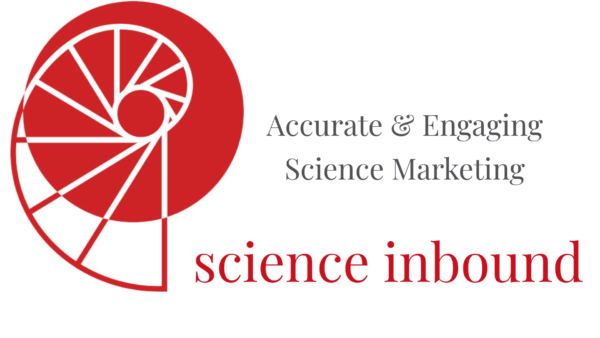How an outside look can help you develop a better biotech USP

If you work in biotech marketing or product management, you probably know what makes your technology valuable – at least in theory. But when it comes to articulating that value clearly, concisely, and in a way that resonates with external audiences, many teams hit a wall.
That wall is often internal bias.
At the core of most biotech messaging challenges is the struggle to define a Unique Selling Proposition (USP) – a clear statement of what sets your product or solution apart.
You’ve lived with the product. You’ve sweated the details. You’re proud of the unique mechanism, the clever feature, or the technical challenge it overcame. But pride can cloud perspective. What feels groundbreaking to your team may not be perceived as a differentiator by potential customers or investors.
This is where an external perspective becomes invaluable.
Bringing in outside support – especially from someone who understands both the science and the market – can transform your biotech USP development process. It helps strip away internal assumptions and refocus your message around what sets your solution apart.
What makes a strong biotech USP?
A USP is more than just a slogan or list of features. It’s a clear, specific statement of what makes your product meaningfully different – and why that difference matters to your customer base and stakeholders.
In practice, a strong USP answers three questions:
- What problem are you solving?
- What’s the unique advantage your product can offer?
- Why should your audience care now?
In the life sciences and pharmaceutical industries, compelling USPs often focus on real-world impact, such as faster workflows, greater reliability, lower error rates, or better outcomes for a defined patient cohort.
The most effective USPs are specific enough to stand out, but simple enough to stick. And crucially: a USP is not necessarily what you’re proud of. It’s what the market sees as valuable.
Internal bias – the invisible barrier to clear messaging
One of the biggest obstacles in biotech USP development is internal bias. Teams often believe they’re being objective, but in reality, they’re just too immersed in the product – and too invested in certain features – to see what truly differentiates it.
It’s a common pattern: internal stakeholders focus on the feature they worked hardest on or the one that represents a scientific breakthrough. But that doesn’t mean it’s the strongest message for your customer base.
Your favorite feature isn’t always your strongest message.
Defining a USP: a case study
Let me share a real-world example. A client’s marketing department came up with the USP “Our laboratory system can speed up process X by a factor of ten”.
OK. Three questions. What does “speed up” mean exactly? How does it affect the daily life of the user? And which technology is used to achieve this?
Talking to the responsible person in R&D, I learned that they had come up with a proprietary technical feature, which he described as the USP. To him, it was evident what I only understood after some discussion: the new instrument design reduced the process time from a full working day to just 20 minutes!
Interestingly, both departments had assumed that their respective statements automatically translated into customer benefit, when in fact they needed a “translation step”.
Combining the information from both departments helped me describe an advantage resonating across the board, from lab managers to potential investors.
And here, the bias wasn’t pride or ignorance. It was proximity.
This is why even the most capable internal teams benefit from external input – someone who can help shift focus from features to impact, and from internal logic to market logic.
What an external perspective adds – and why it works
When it comes to USP development, an external perspective doesn’t just bring objectivity – it brings clarity. A qualified outsider isn’t tangled in your internal structure, legacy decisions, or product backstory. That distance allows them to spot what’s actually compelling.
More importantly, a good external expert brings two things internal teams often lack in combination: scientific accuracy and market awareness.
They understand the science well enough to respect nuance, but they also know what stands out in a crowded, time-pressed market. They ask different questions, listen without assumption, and are willing to push back when something doesn’t translate.
Best practices for working with external experts
An external perspective only adds value if the collaboration is built on confidence, transparency, and the right kind of expertise. Here’s how to make it work:
- Choose someone who understands both your science and your space.
Not every freelance writer is equipped for biotech. Look for someone who can navigate both the technical depth and the market context of your product. - Brief thoroughly, then let go.
Provide full context, but resist the urge to steer the narrative too early. A good consultant will ask smart, sometimes uncomfortable questions to test assumptions and uncover what resonates with your target audience. They also may ask you to gather more information from your clients or product users to sharpen the message. - Expect to be challenged.
The goal isn’t to reinforce internal thinking, but to expose blind spots. A qualified freelancer can serve as a constructive challenger, not just a service provider. - Look for someone who values scientific accuracy as much as messaging.
Especially in regulated or highly technical sectors, credibility matters. The right partner won’t dilute the science – they’ll help distill it.
When done well, this kind of collaboration doesn’t just yield a clearer USP; it also fosters a deeper understanding of the product. It sharpens your overall strategy and helps to communicate your company’s vision.
For startups, clarity means credibility
Biotech startups often operate with deep scientific expertise and a strong internal vision. Yet, communicating that vision to the outside world – especially to potential customers, partners, or investors – is often a challenge.
I’ve been on both sides of this process: As a lab user who needed reliable tools, and as a startup founder responsible for explaining what made ours stand out. That dual perspective helps me translate technical advantages into positioning that holds up in both boardrooms and lab meetings.
A well-defined USP becomes a startup’s shorthand for value. It shows you understand your market, not just your molecule, instrument, or platform approach. And it signals that you’re ready not just to explain your technology, but to demonstrate its relevance and value.
A scientifically trained freelancer like myself, who has both been on the user end and carried marketing responsibility in a biotech startup, knows what’s at stake. You’re not looking for fluff. You’re looking for transparent communication that earns trust. And that’s precisely what I can help deliver.
Need help finding the message behind the science? Let’s talk.
Image: Pixabay, AI-generated.
- Using AI for biotech and scientific translation – with human precision - November 11, 2025
- AI in science communication: help or hype? - October 6, 2025
- How an outside look can help you develop a better biotech USP - August 4, 2025
